Patio rugs are a stylish and functional addition to any outdoor space, offering comfort underfoot while enhancing the area’s aesthetic appeal. However, because these rugs are constantly exposed to outdoor elements such as dirt, dust, moisture, and occasional mold, they can quickly accumulate stains and wear. Without proper care, patio rugs may lose their vibrancy and become breeding grounds for mildew, affecting both their appearance and longevity.
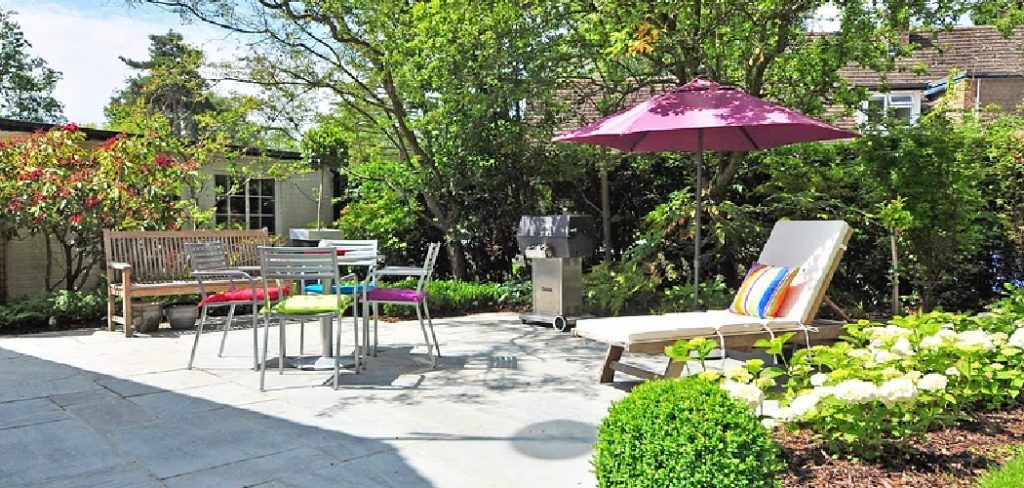
Understanding how to clean patio rug is essential for maintaining its condition and ensuring it continues to enhance your outdoor space. A clean rug elevates the visual appeal of your patio and promotes a hygienic and comfortable environment. This guide provides step-by-step instructions to help you properly clean and care for your patio rug, keeping it fresh, vibrant, and durable throughout the seasons. With the right approach, your patio rug can remain a beautiful addition for years.
Preparing the Rug for Cleaning
Removing Dirt and Debris
The first step to cleaning your patio rug is to eliminate loose dirt and debris. Begin by shaking the rug thoroughly to dislodge dust and particles trapped in the fibers. If the rug is too large to shake, use a broom to sweep its surface or a vacuum cleaner with a hose attachment for a more efficient cleanup. Removing this top layer of grime ensures that the cleaning process focuses on deeper stains and embedded dirt without spreading loose debris during washing.
Inspecting the Rug for Stains
After clearing away surface dirt, scrutinize your rug for any stains or heavily soiled areas. Common culprits include pet stains, mold spots, or beverage spills. Identifying these spots is crucial, as they require targeted cleaning methods or specialized products to ensure effective removal. Please take note of their locations so you can tackle them appropriately during the cleaning process.
Choosing the Right Cleaning Tools and Materials
Selecting the proper cleaning tools and materials is key to preserving the condition of your patio rug. Essentials include a vacuum cleaner with a hose attachment for debris removal, a mild detergent to avoid damage to fibers, a brush for scrubbing
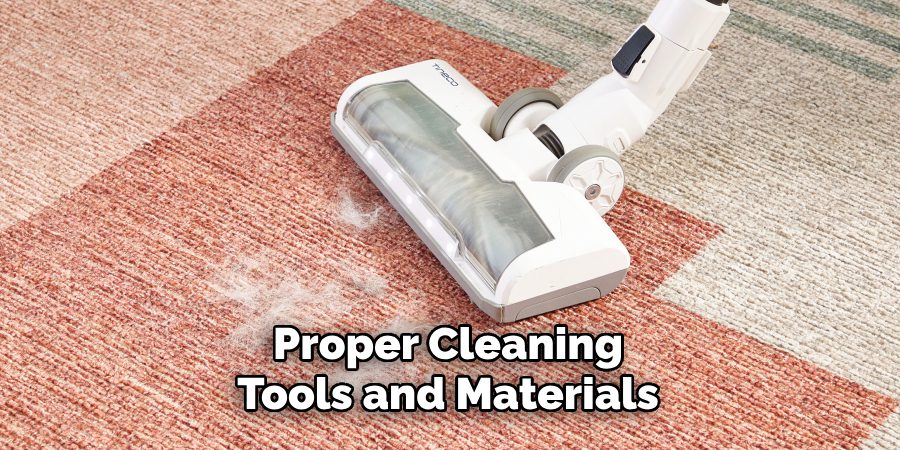
tough stains, and a garden hose for rinsing. These items will streamline the cleaning process and ensure a thorough, effective result.
Vacuuming and Sweeping the Rug
Using a Vacuum Cleaner
Begin cleaning your patio rug by gently vacuuming it to remove loose dirt, dust, and sand particles. Use a vacuum cleaner with a hose or upholstery attachment for optimal results. Carefully vacuum the rug on both the top and bottom surfaces to ensure all embedded debris is removed. Pay special attention to high-traffic areas or corners where dirt tends to accumulate. Vacuuming prepares the rug for deeper cleaning and extends its lifespan by preventing dirt buildup.
Sweeping for Heavier Debris
Use a sturdy broom for heavier debris such as leaves, twigs, or stubborn dirt that vacuuming might miss. Sweep the rug thoroughly, applying even pressure to dislodge debris trapped in the fibers. Start in one corner and work your way across systematically to avoid missing any areas. Sweeping is particularly useful for outdoor rugs exposed to natural elements that can bring in stubborn residues.
Flipping the Rug
Flip the rug over and repeat the vacuuming and sweeping steps on the underside to ensure a comprehensive cleaning. Dirt and sand can accumulate underneath, especially on rugs placed in outdoor settings. By cleaning both sides, you guarantee a fresher, cleaner surface and prepare the rug for the next stages of the cleaning process.
How to Clean Patio Rug: Deep Cleaning the Rug
Step 1: Spot Cleaning Stains
Begin by addressing any noticeable stains on the rug. Prepare a gentle cleaning solution by mixing water with a mild detergent to ensure the fibers won’t damaged. Apply the solution directly to the stained areas using a spray bottle or a damp cloth. Gently
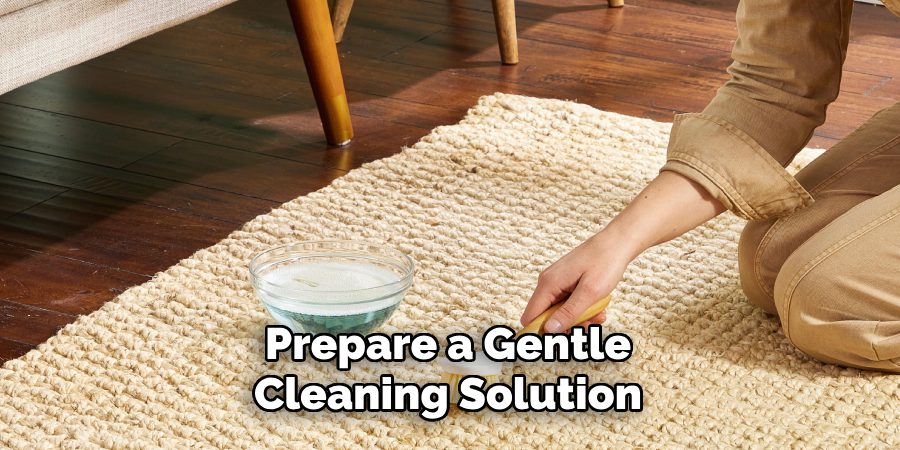
scrub the stains with a soft-bristled brush or sponge, working in circular motions to lift the discoloration. Be careful not to apply too much force, which could fray or damage the fibers. Once the stains are treated, wipe away any excess cleaning solution with a clean, damp cloth.
Step 2: Washing the Rug
Once spot cleaning is complete, move on to washing the entire rug. Lay the rug flat on an appropriate surface, such as a driveway or patio, ensuring it is free from obstructions. Use a garden hose to thoroughly rinse the rug, removing surface dirt and preparing it for a deeper clean. Then, apply a solution of mild detergent and water across the rug’s surface. Use a brush with soft or medium bristles to scrub the rug, working section by section to lift dirt and grime trapped in the fibers. Make sure to address the edges and corners, as these areas often collect the most residue.
Step 3: Rinsing and Drying
After scrubbing, rinse the rug once again with clean water from a garden hose to remove all soap residue. Ensure the rug is entirely detergent-free, as leftover soap can attract more dirt over time. Finally, hang the rug over a sturdy clothesline or railing or lay it flat in a sunny area to dry thoroughly. Sunlight helps expedite drying and prevents mildew from forming, leaving your rug fresh, clean, and ready to use.
Cleaning Specific Types of Patio Rugs
Synthetic Rugs (Polypropylene, Nylon, Polyester)
Synthetic rugs are popular for outdoor use due to their durability and resistance to stains and fading. To clean these rugs, start by shaking off loose dirt or debris. Then, use a gentle detergent mixed with water and a soft-bristle brush to scrub the surface
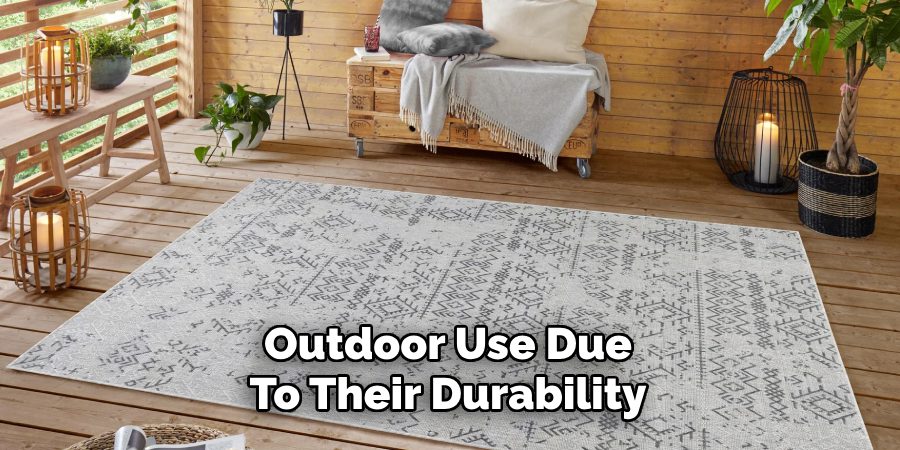
lightly. A garden hose can be used to rinse away the dirt and soap thoroughly. Synthetic materials dry quickly, so you can lay the rug out flat or hang it in a sunny spot to expedite the process. Regular maintenance will ensure that your synthetic rug remains vibrant and functional for years.
Natural Fiber Rugs (Jute, Sisal, Cotton)
Natural fiber rugs require more careful handling due to their delicate materials. Begin by vacuuming the rug to remove surface dust and dirt, as natural fibers are more prone to trapping debris. Use a mild detergent diluted in water for spots or stains and apply it to the affected areas with a soft cloth or sponge. Avoid saturating the rug with water, as natural fibers can weaken or become discolored when overly wet. Once clean, allow the rug to air dry completely before placing it back in use. Remember to keep natural fiber rugs away from excessive moisture to maintain their integrity.
Outdoor Rugs with Backing
Special care is necessary for outdoor rugs with a backing material to prevent damage. When cleaning, ensure that the backing does not become overly wet, as this can lead to mildew or mold growth. Use a hand vacuum or broom to remove dirt and debris on the surface. Spot-clean the rug with a light detergent solution without drenching the backing. When drying, hang or position the rug to allow airflow to reach both the front and back, ensuring the entire piece dries thoroughly. Regular inspection and cleaning will keep your outdoor rug with backing fresh and mildew-free.
Dealing with Mold and Mildew
Mold and mildew can compromise both the appearance and durability of your rug. Identifying the issue early is key; look for black, green, or gray spots and sniff for a musty odor, both indicating fungal growth. Addressing mold and mildew promptly prevents further damage and safeguards your health.
To disinfect the affected areas, apply a solution of vinegar and water or a diluted bleach mixture. Mix equal parts white vinegar and water for vinegar, while for bleach, use one part bleach to three parts water. Test a small, inconspicuous rug area first to ensure the solution does not cause discoloration. Using a soft brush or cloth, gently scrub the moldy spots to remove spores effectively.
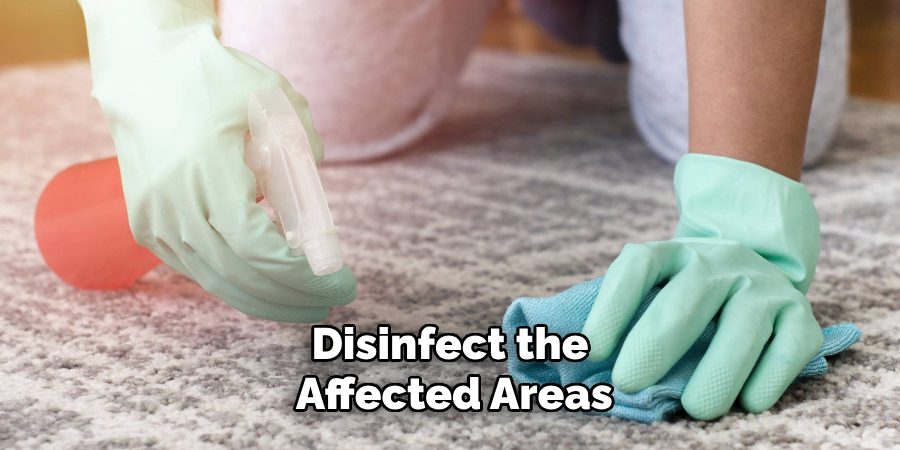
Once cleaned, rinse the rug thoroughly with clean water to remove any residue. It’s essential to allow the rug to dry completely; hang it in a spot with good airflow and sunlight to speed up the drying process and help inhibit further fungal growth. Ensuring the rug is bone dry before placing it back in use is crucial, as even small amounts of retained moisture can reignite mold and mildew development. Regular inspections can help you catch issues early and maintain the rug’s longevity.
Maintaining the Patio Rug
Regular Cleaning Schedule
Establish a regular cleaning routine to maintain your patio rug’s cleanliness and durability. Vacuuming or sweeping the rug every week is crucial for preventing dirt, dust, and debris buildup that can lead to wear and tear over time. For tougher stains, spot-clean the area promptly using a mild detergent and water mixture. Always test the cleaning solution on an inconspicuous part of the rug first to avoid potential damage.
Storing the Rug During Off-Season
Proper storage during off-season periods, such as winter or during harsh weather conditions, is essential to prolong the life of your patio rug. Ensure the rug is spotless and dry to prevent mold or mildew from forming during storage. Roll up the rug tightly and store it in a cool, dry place, preferably in a storage bag or protective cover to shield it from dust and pests. Avoid folding the rug to prevent creases and damage to the fibers.
Using a Rug Pad
Consider placing a rug pad underneath your patio rug. A rug pad prevents slippage, adding an extra layer of safety, especially in high-traffic areas. Additionally, it enhances airflow, reducing moisture buildup and improving the overall longevity of the rug.
Conclusion
Maintaining your patio rug is simple and highly effective when you follow the right steps. Begin with regular sweeping to remove loose dirt, followed by deep cleaning to tackle embedded debris. Address stains promptly with mild solutions and ensure proper drying to avoid moisture damage. Regular maintenance is crucial to keep your patio rug clean and fresh. During harsh weather, store the rug properly to extend its lifespan. By following these practices and understanding “how to clean patio rug” thoroughly, you can preserve its beauty and functionality for years to come, ensuring a welcoming outdoor space.

Professional Focus
Oliver Wood, a passionate patio designer, specializes in creating comfortable and inviting outdoor spaces that enhance relaxation and entertainment. His work combines a deep understanding of design with a love for nature, making him a standout professional in the field of outdoor living spaces. Through his thoughtful approach, he transforms everyday patios into extraordinary retreats for family and friends.
About the Author
Oliver Wood, a skilled patio designer, shares his expertise on outdoor living through his designs and insights. With a background in patio design and a genuine passion for creating beautiful spaces, he encourages others to invest in their outdoor environments, enhancing their homes with functional and inviting spaces for relaxation and entertainment.
Education History
University: Virginia Union University
Oliver’s education equipped him with the knowledge and skills to design patios that merge aesthetics with comfort, transforming outdoor areas into beautiful extensions of the home.
Expertise:
- Patio Design and Outdoor Living Spaces
- Functional and Aesthetic Landscaping
- Comfortable and Inviting Outdoor Environments
- Design Philosophy for Family-Oriented Spaces
- Creating Spaces for Relaxation and Entertainment
